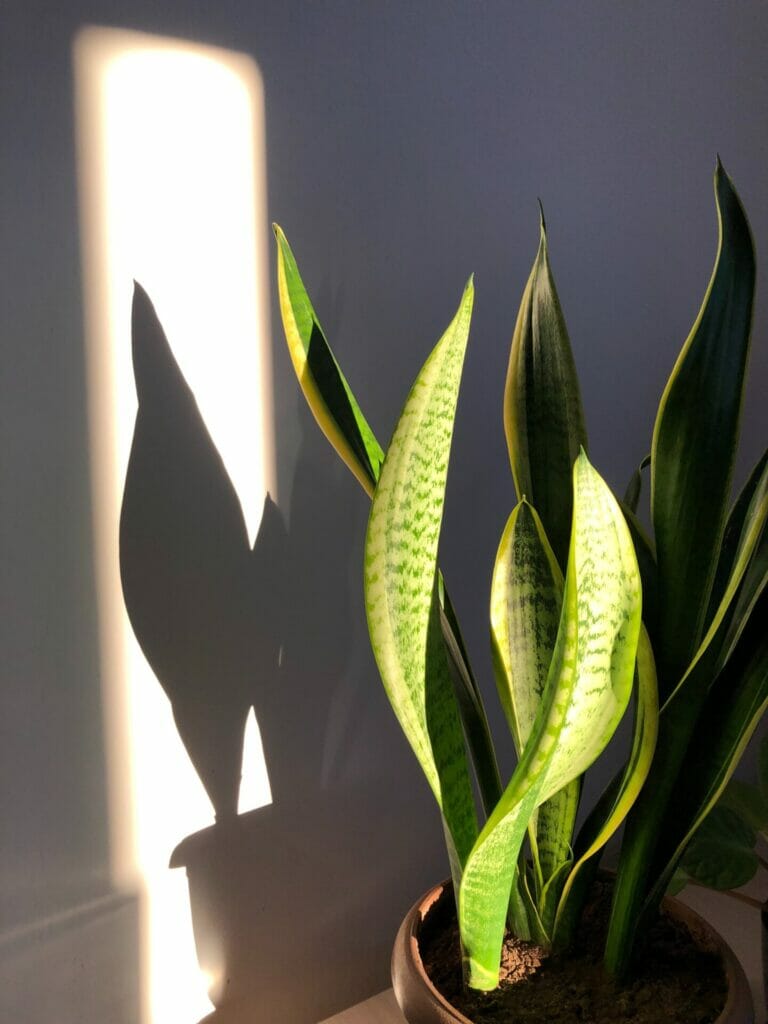Sanseveria, commonly known as Mother-in-law’s tongue, or snake plant, is a houseplant native to Africa. The leaves of snake plants are ornamental and offer a great outlook making your indoors versatile.

If you’re looking for a low-maintenance plant and easy to care for, then you’ll want to check out the snake plants. Sansevieria is a succulent plant, meaning it has thick, fleshy leaves that store water. This makes them perfect for people who forget to water their plants. Moreover, snake plants are excellent air purifiers, helping to remove harmful toxins from the air in your home or office.
Facts:
Name: Sansevieria
Family: Asparagaceae
Type: Indoor plant
Height: 8 inches to 5 feet (0.2-1.5 m)
Exposure: Well-lit
Soil: Well draining
Flowering: March
Care For Sansevieria- Snake Plants
One of the great things about snake plants is that they are very easy to care for. They don’t need a lot of water and can even tolerate some neglect. However, if you follow a few guidelines regarding light and water, the snake plants will go long way.
Light Care
Sansevieria prefer good light, but the direct sun should be avoided as it can cause the leaves to burn.Therefore, avoid south or west-facing windows to avoid direct sun exposure. Sanseveria can also adjust in low-light areas of your indoor space. They are versatile and can withstand just about any household lighting.
If your sansevieria is happy indoors in low light, don’t put it outdoors in harsh sun too quickly as it can cause the plant to go in shock.

Water Care
If you’re wondering how often to water your snake plant, the answer is not as often as you might think. It’s best to let the soil dry out completely between watering. This plant is native to arid regions, so it’s used to surviving in drought conditions. Watering too often will lead to root rot, so err on the side of underwatering rather than overwatering.
If you’re still unsure, take a look at the leaves. If they start to droop, that means they’re thirsty, and it’s time for a drink. However, if the leaves are mushy or falling off, you’ve watered too much and should cut back.
One thing to remember is that snake plants are more sensitive to fluoride and other tap water chemicals. So, you can use distilled or filtered water to avoid potential problems.

Different varieties of Sansevieria – Snake plant
Sansevieria is a genus of about 70 species of flowering plants native to Africa, Madagascar, and southern Asia. Common names for the genus include mother-in-law’s tongue, devil’s tongue, jinn’s tongue, bow string hemp, snake plant, and snake cactus.
There are many different varieties of Sansevieria available, including:
- Sansevieria cylindrical: Known by the name Boncel snake plant, is a rare variety. Leaves of these varieties are curled and form thick cylinders.
- Sansevieria trifasciata: This is the most commonly available variety, also known as the Mother-in-Law’s Tongue. It has stiff, upright leaves that are banded with green and silver stripes.
- Sansevieria hallii: This variety has arched leaves that are like ¾ths closed cylinders. It is a very slow rowing variety.
More Care Tips:
If you’re thinking about adding a snake plant to your home, there are a few things to keep in mind when it comes to care. Snake plants are tough and low-maintenance, but you can do a few things to help them thrive.
- First, snake plants like bright light but can tolerate low light. If you’re growing your snake plant indoors, place it in a spot that gets good light but isn’t in direct sunlight.
- Second, water your snake plant when the soil is dry to the touch. Snake plants are tolerant of drought, so you don’t need to worry about over-watering them. Just make sure the soil is dry before watering again.
- Finally, fertilize your snake plant once a month during the growing season with a balanced liquid fertilizer. Be sure to follow the directions on the fertilizer package, so you don’t over-fertilize and damage your plant.
- Sansevieria will be planted in soil that drains well when you get them and when re-potting, use the same type.
With these care tips in mind, you’re sure to have a thriving snake plant in no time! If you liked this article, visit our website for more articles.
